Sensly
Product design / UX – case study
Project overview
Sensly provides holistic solutions for mental health care system. Through a marketplace patients can find, book and take part in on-line sessions with verified mental health professionals. In order to lower the barier of entry we have developed a special automated system called „Sensly Assistant”. Mentioned feature helps in matching patients’ problems and needs with mental health professionals qualified in respective fields.
Sensly offers as well a buil-in SaaS dedicated to mental health professionals, that automates their work processes and provides comprehensive support for all online services.
Goals
- Design marketplaces and SaaS platforms from scratch.
- Build and launch MVP within 3 months.
- Gather users’ feedback and data to iterate on the product.
- Design a scalable and easy-to-use design system.
- Optimize users’ critical paths & -increased CTR wherever possible.
- Optimize communication funnels, including UX copy.
Responsibilities
- Conducting user research and interviews
- Developing information architecture, user flows, and prototypes.
- Leading content creation with a strong focus on UX copy.
- Building and developing an entire design system using atomic design
- Collaborating with analysts to build and improve ways of collecting data (Google Analytics, HotJar, Kibana).
User centric approach
Design Thinking and Lean UX
Clarify
User surveys, in-depth interviews, social media platforms engagement and community management
Ideate
Workshops and cross-functional team meetings (mind mapping, card sorting, personas segmentation, user journeys, user flows etc.)
Develop
Creating high fidelity mockups, prototypes and designs in fast and efficient manner thanks to created design system.
Implement & test
Google analytics, HotJar, results review, collecting feedback, surveys and interviews.
Clarify
Emphatizing & defining
User Personas & goals (marketplace)
Techniques used for the initial user research (B2C sector – Patients): insights from mental health professionals, workshop, F&F interviews. Next iteration included data from Facebook Ad Manager, Google Analytics and users’ feedback gathered through community management. Based on various types of mental health problems, different levels of problem awareness, stages of life, martial status, interests, common ways of dealing with problems, gender and more, we created an extensive matrix of users personas that helped us in creation of various scenarios and testing business assumptions (from product and communication perspectives).
Main user’s goal / critical path: finding the best mental health professional and book an on-line session with him / her.
Ideate
Brainstorming solutions
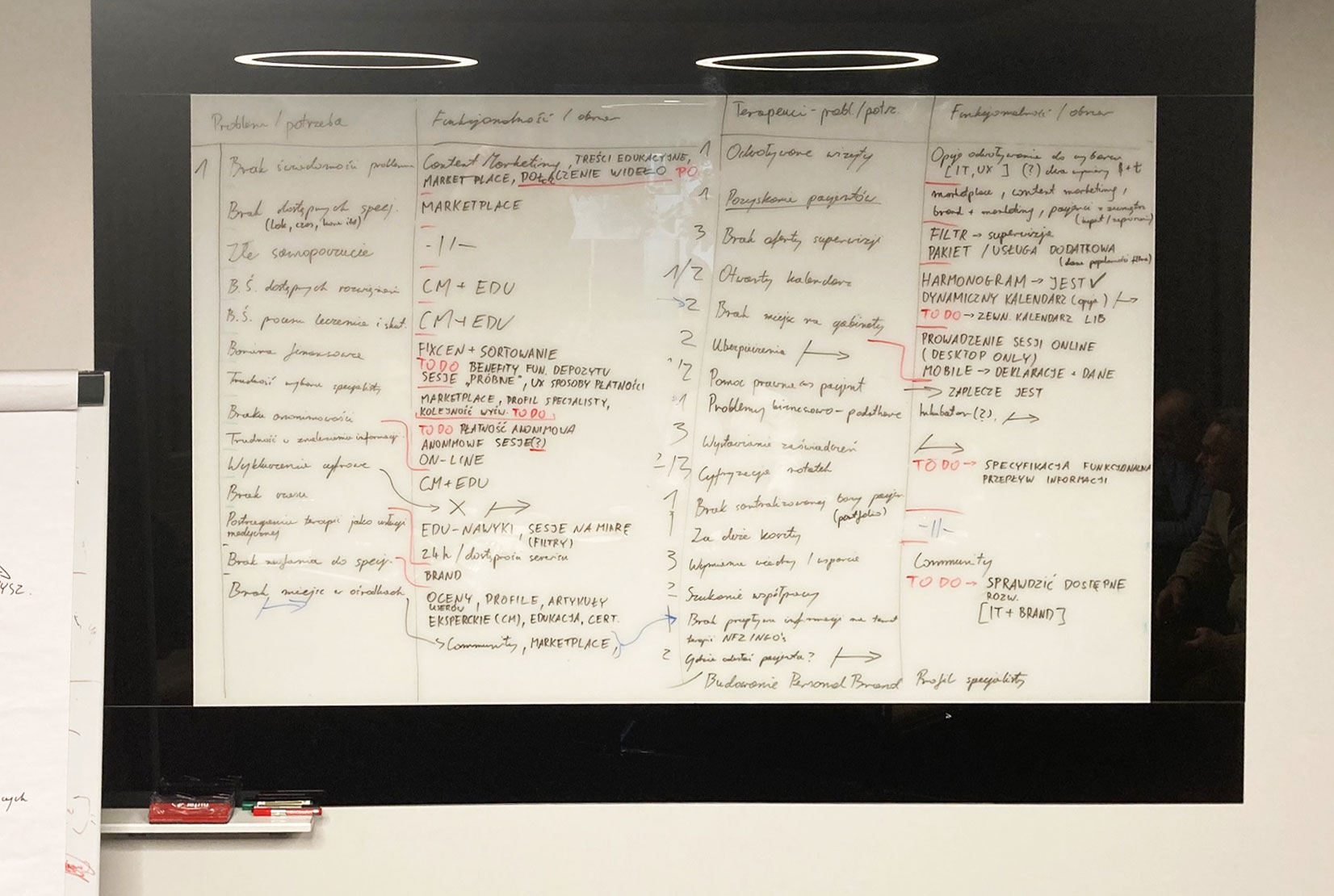
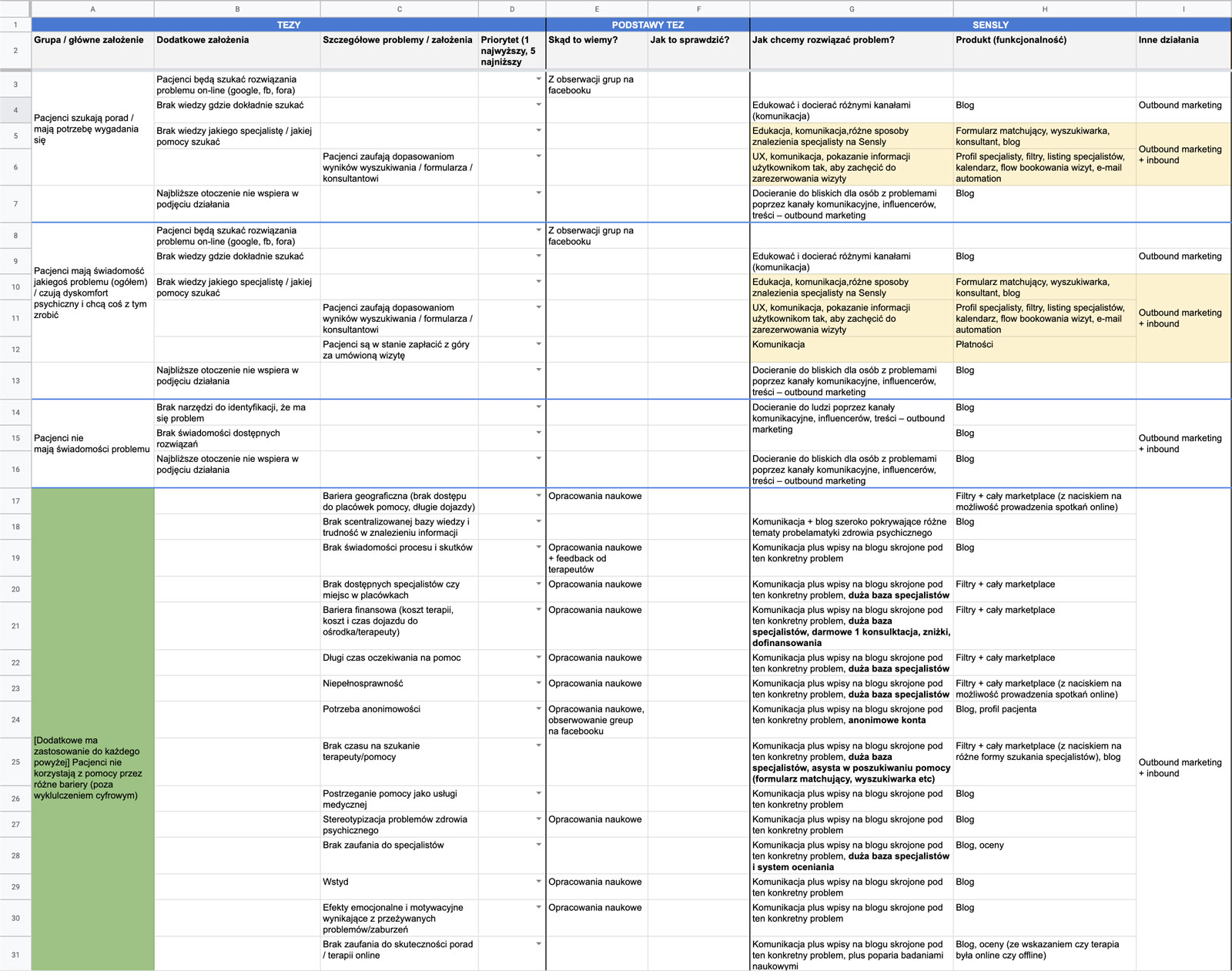
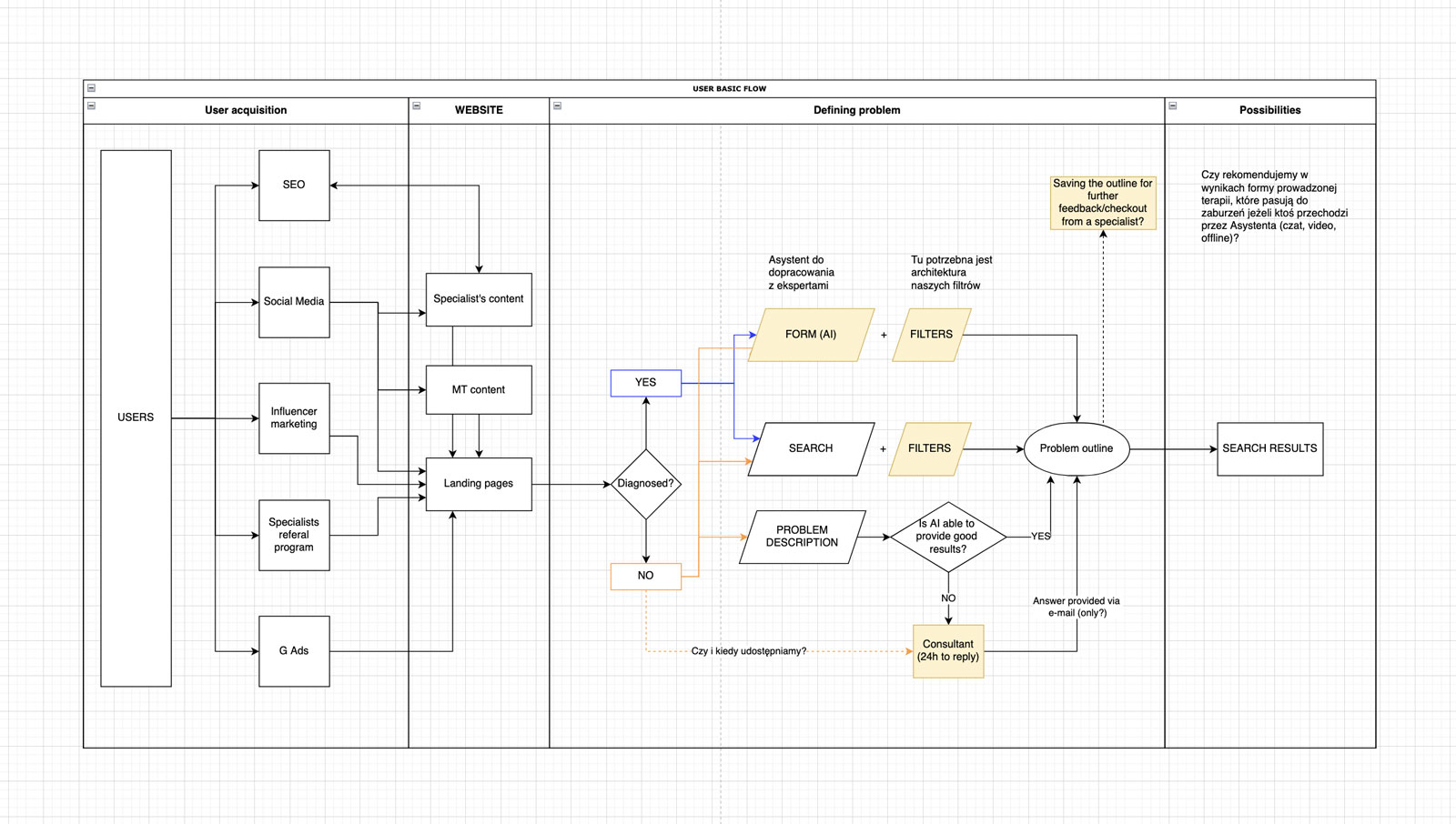
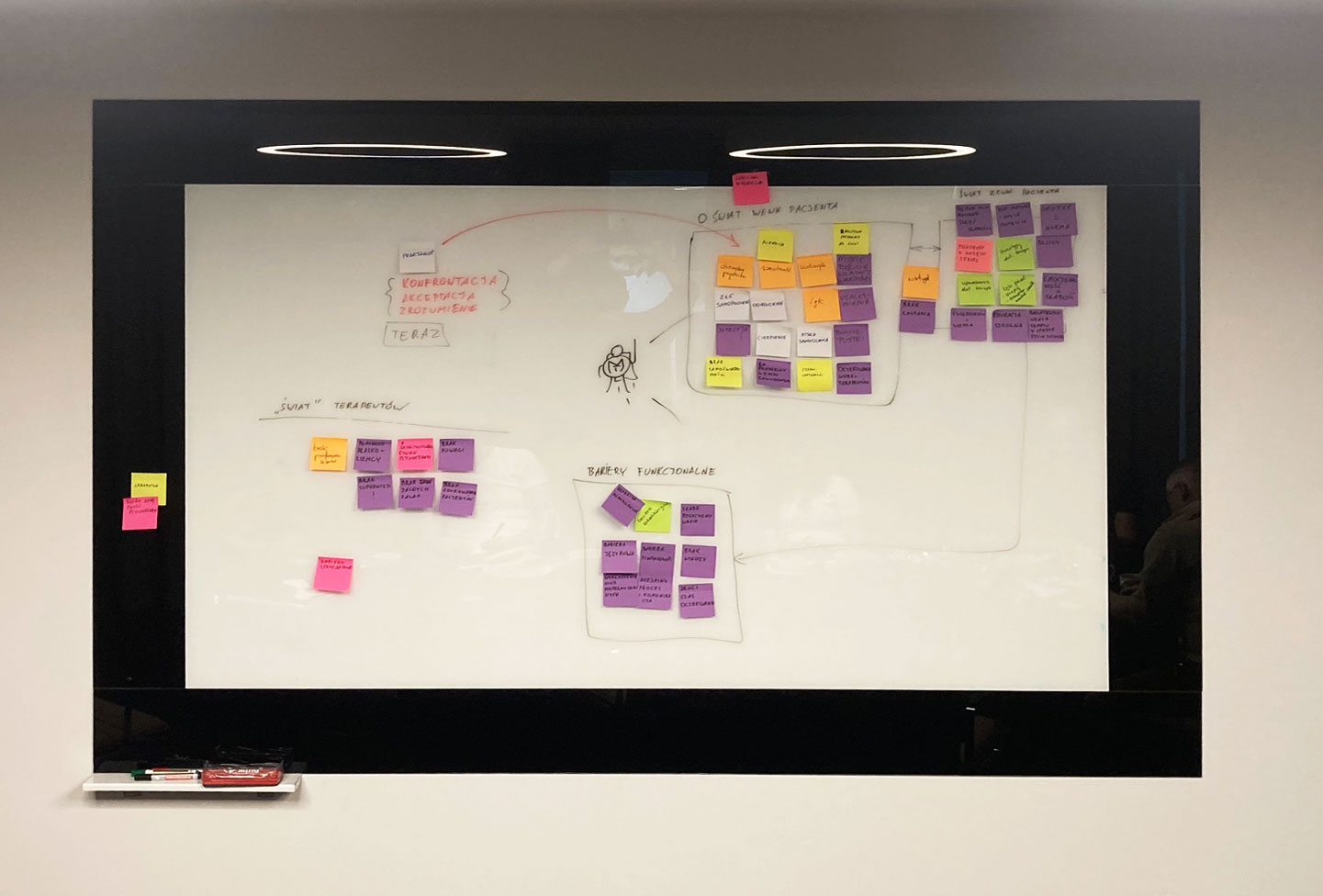
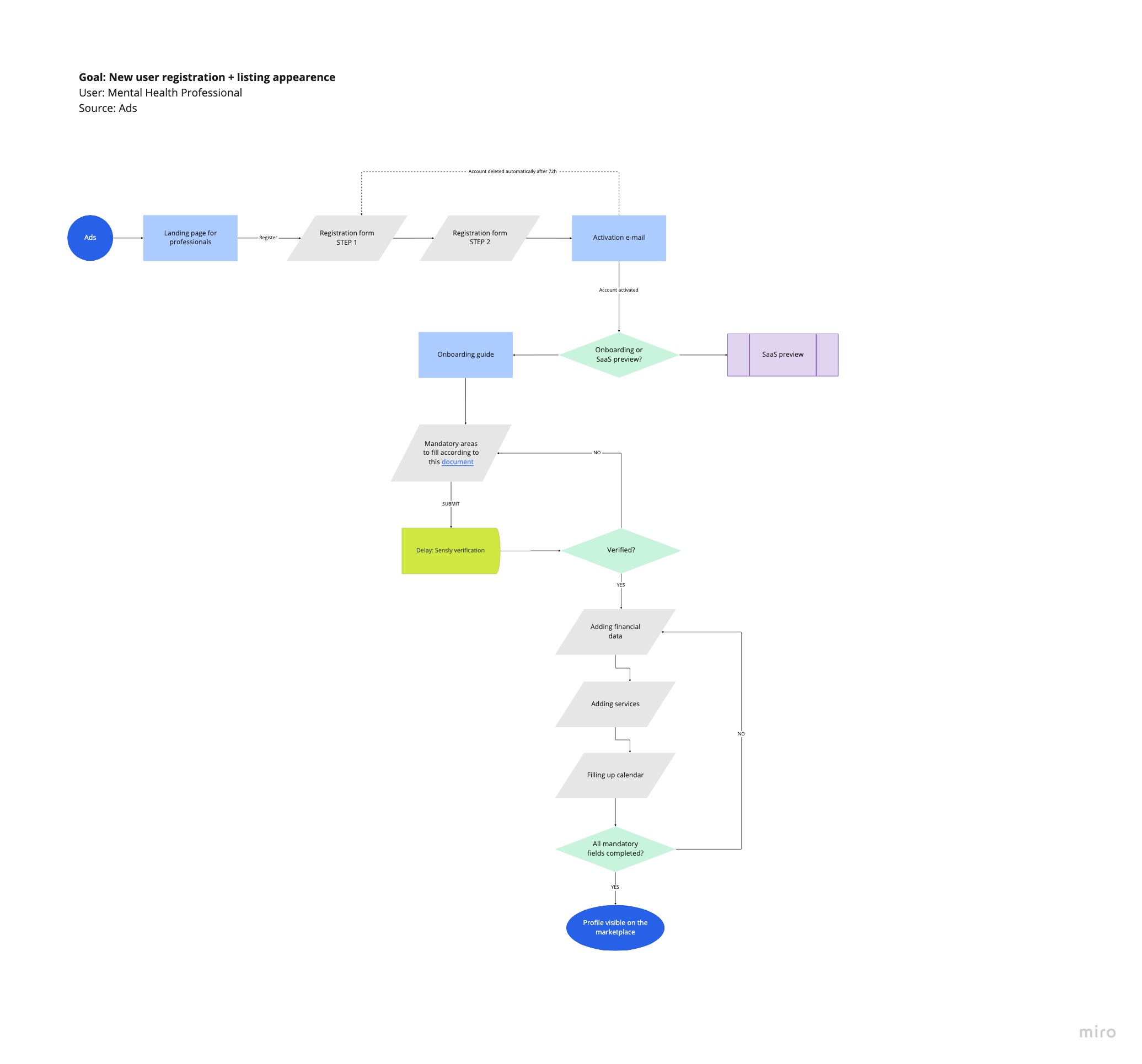
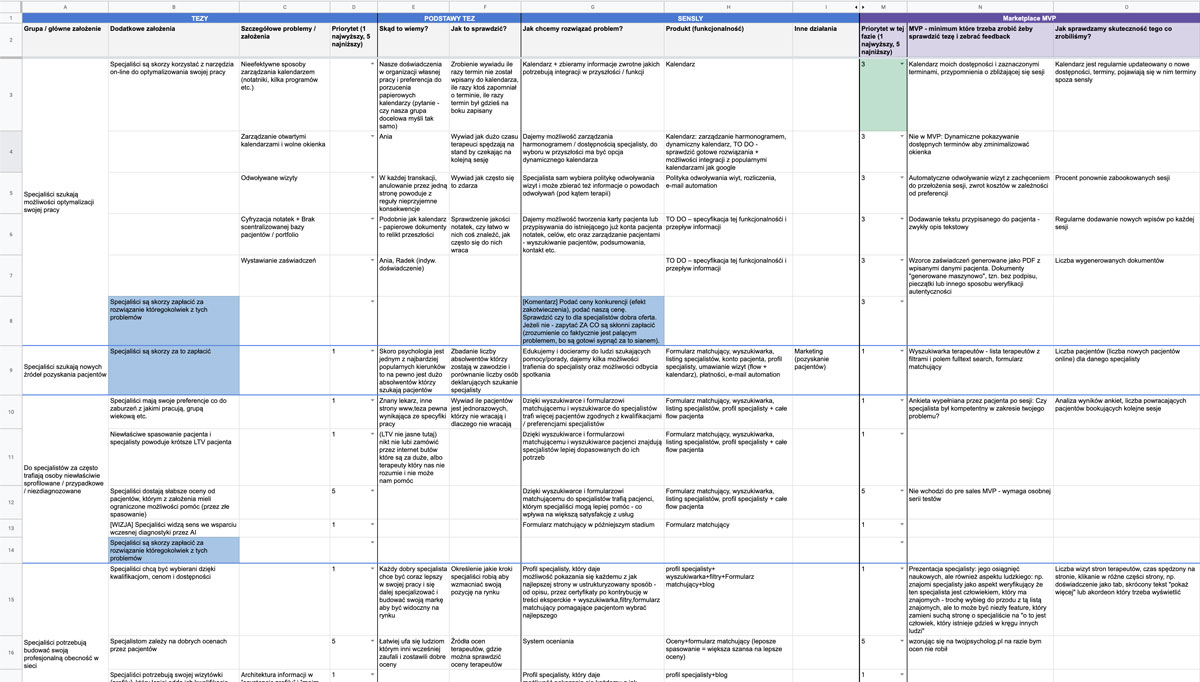
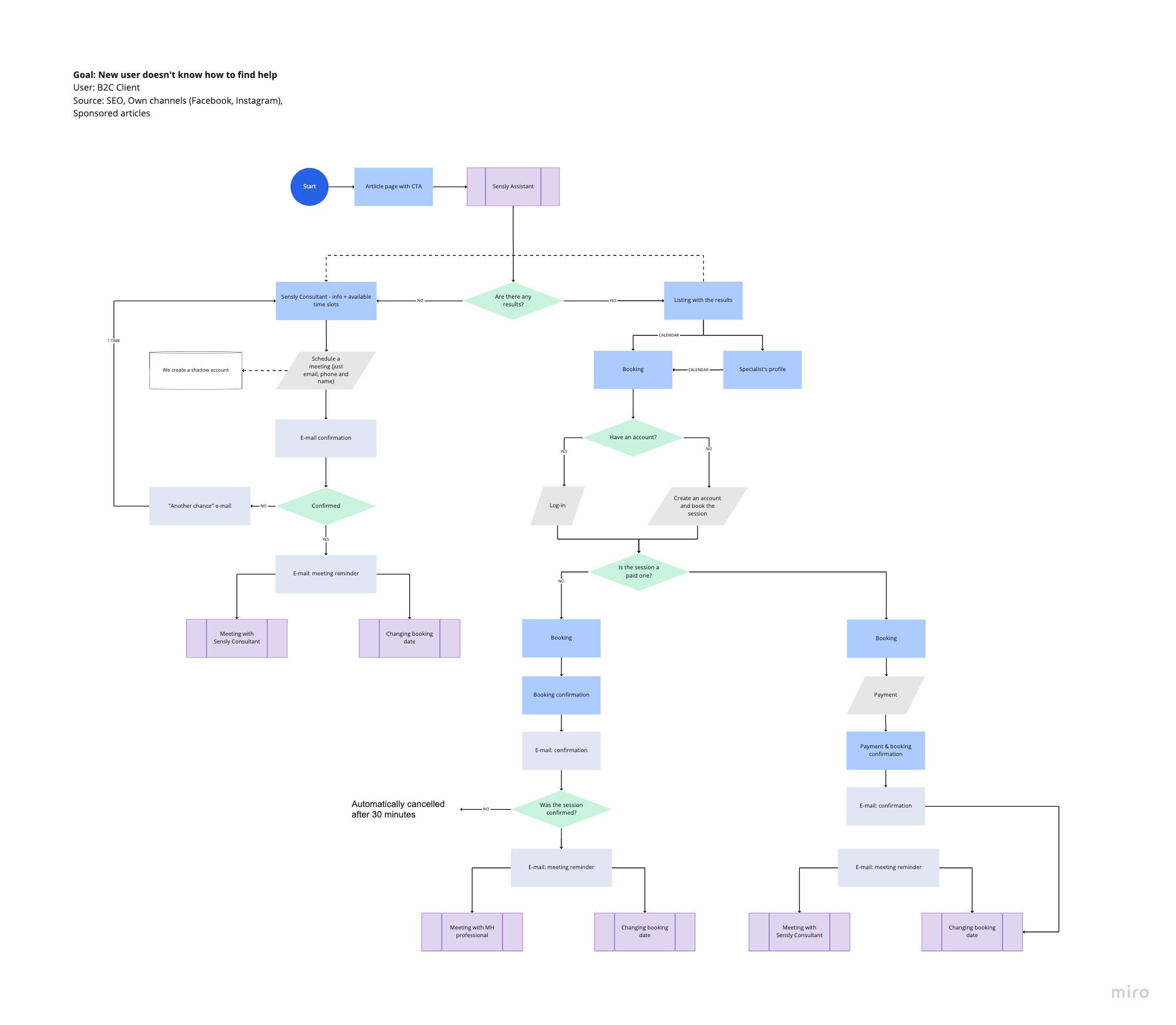
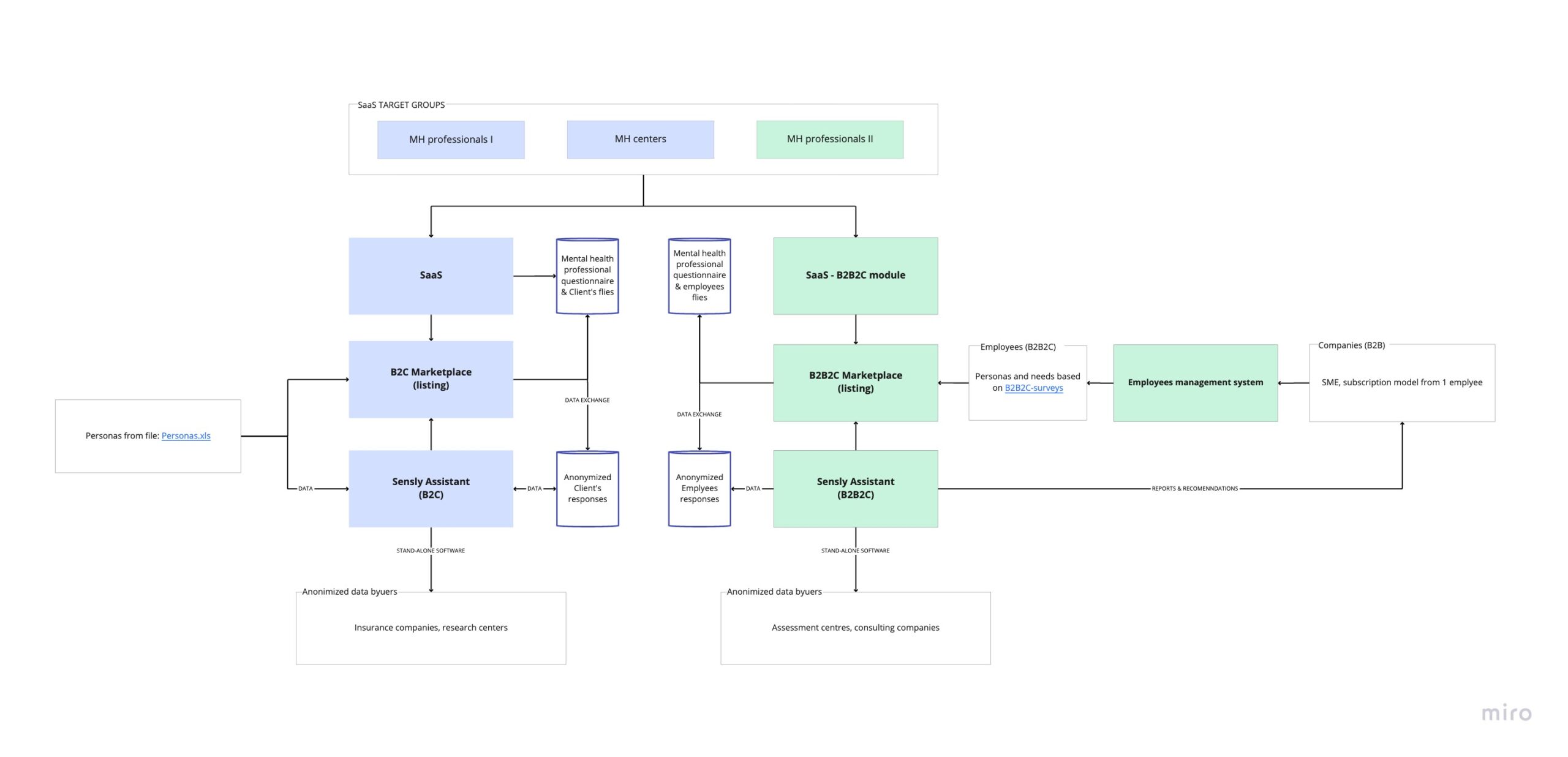
Develop
From mockups to designs
Each solution was always assessed from two perspectives: meeting the needs of users and matching the requirements of the business model.
Thanks to the use of data from Google Analytics, HotJar (heatmaps and recordings) and feedback loops (surveys and interviews) we were able to quickly iterate the designed solutions in order to meet the above-mentioned requirements. Additionally, due to the efficiency of the entire development process and design system, we were able to go live with our solutions skipping a lot of times the prototyping part to collect qualitative and quantitative data from the real users.
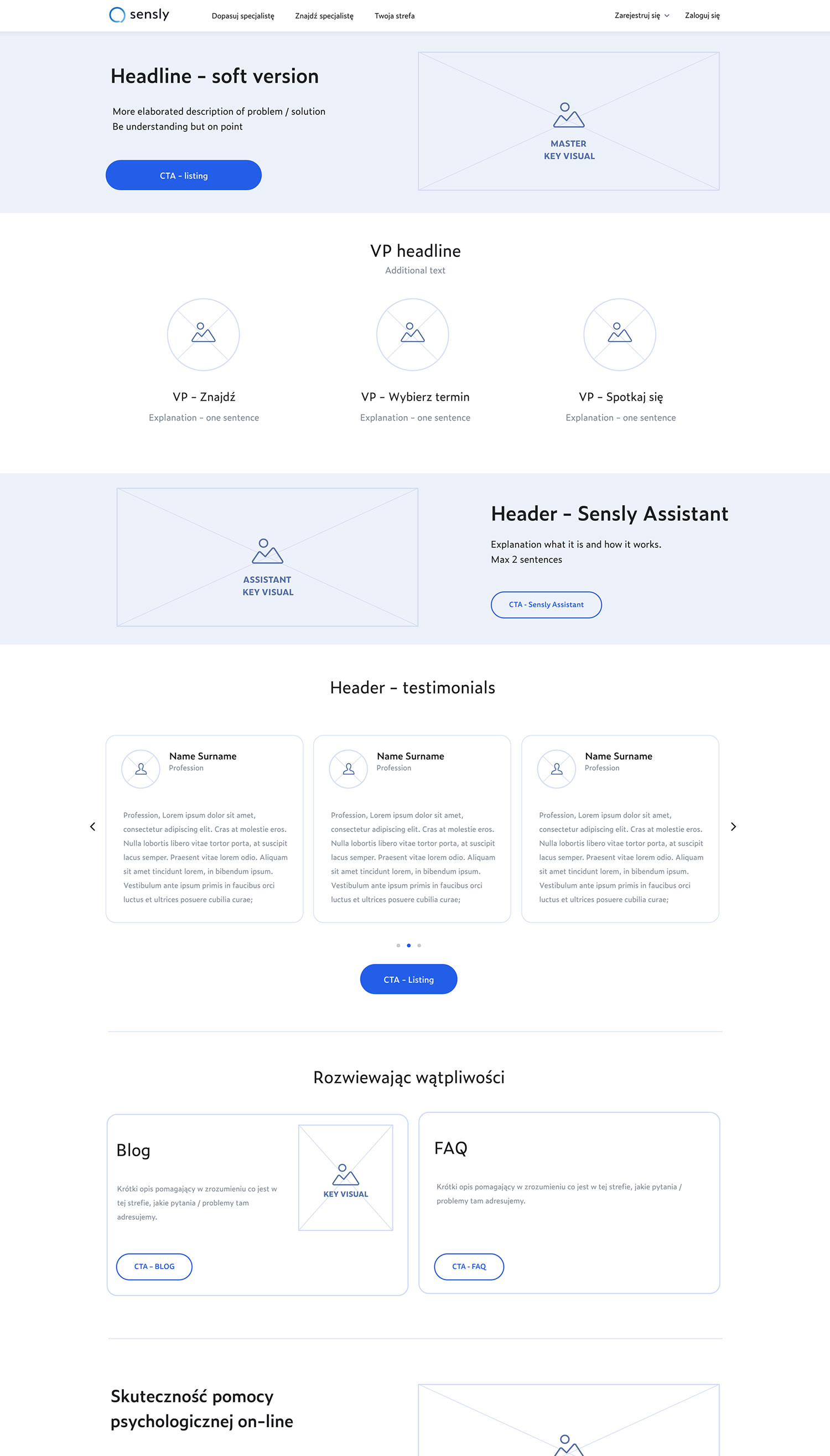
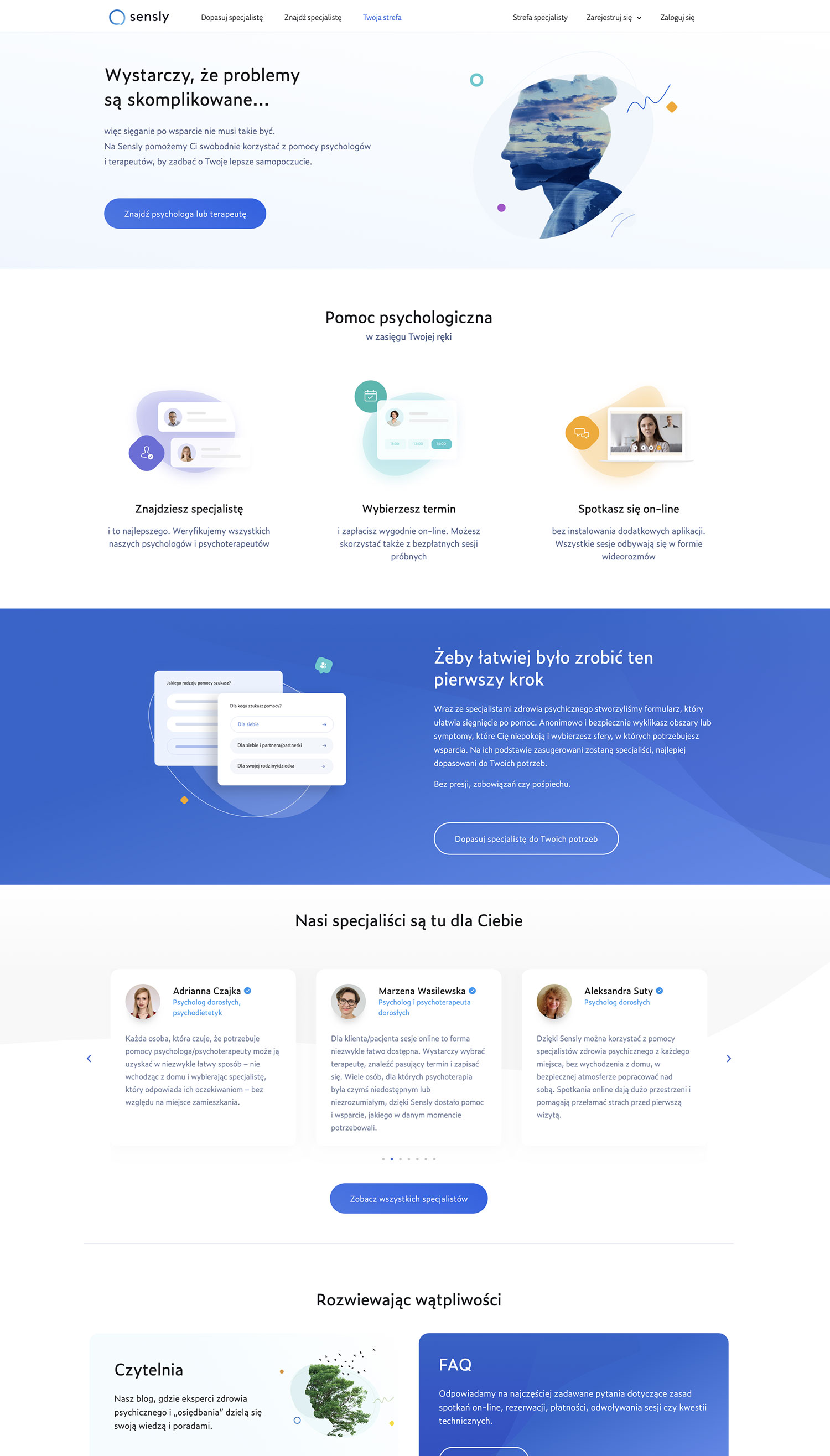
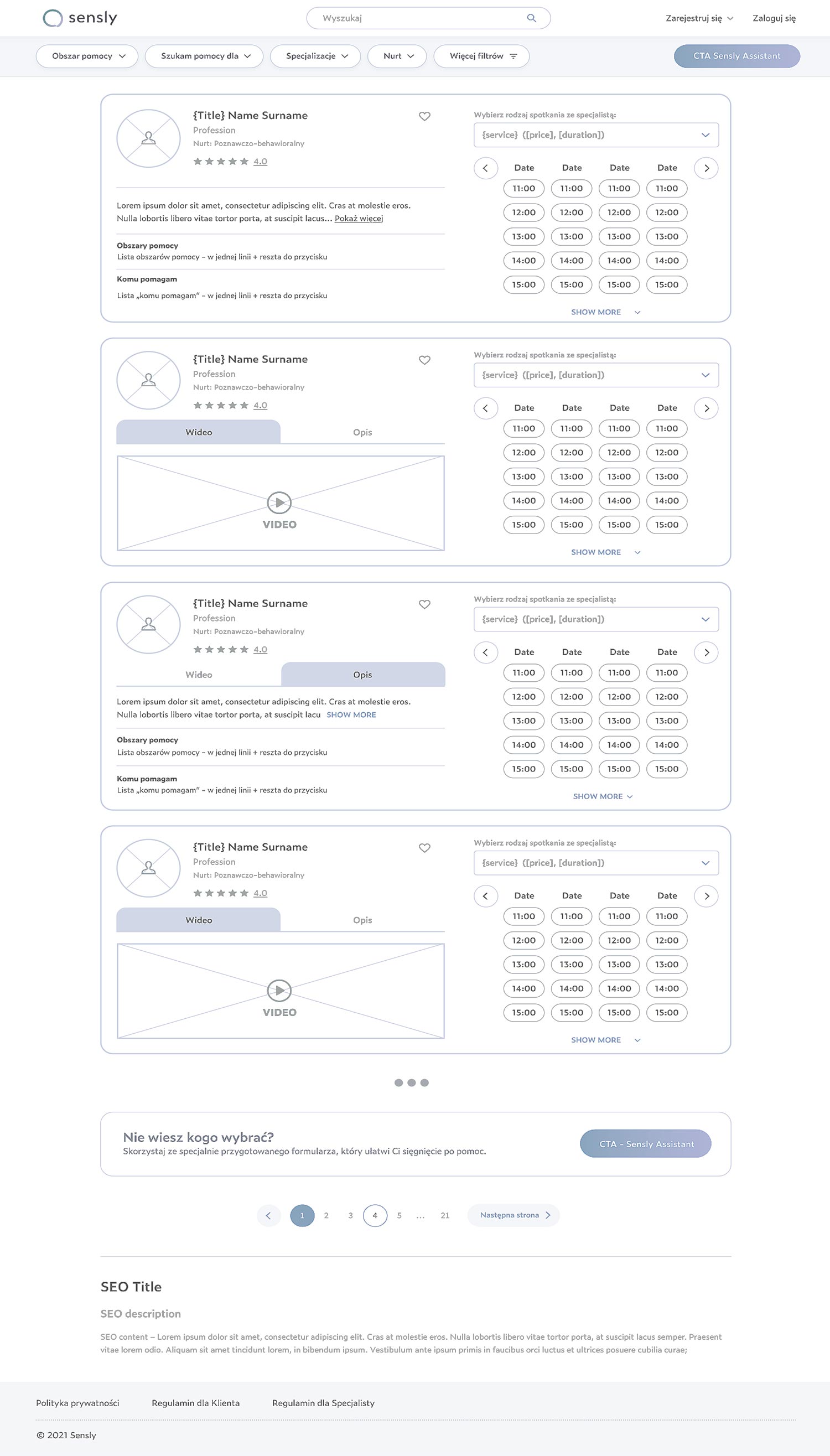
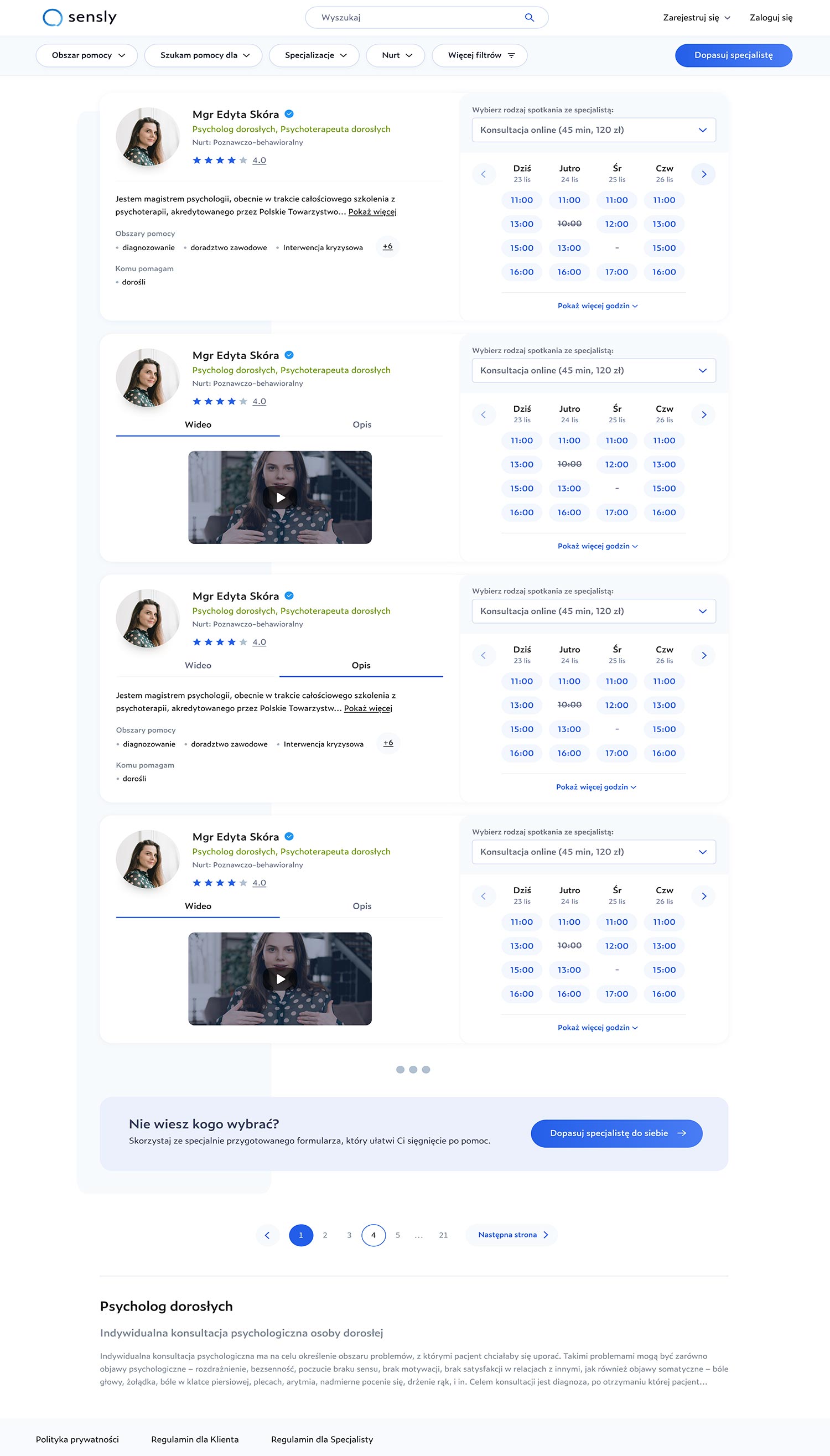
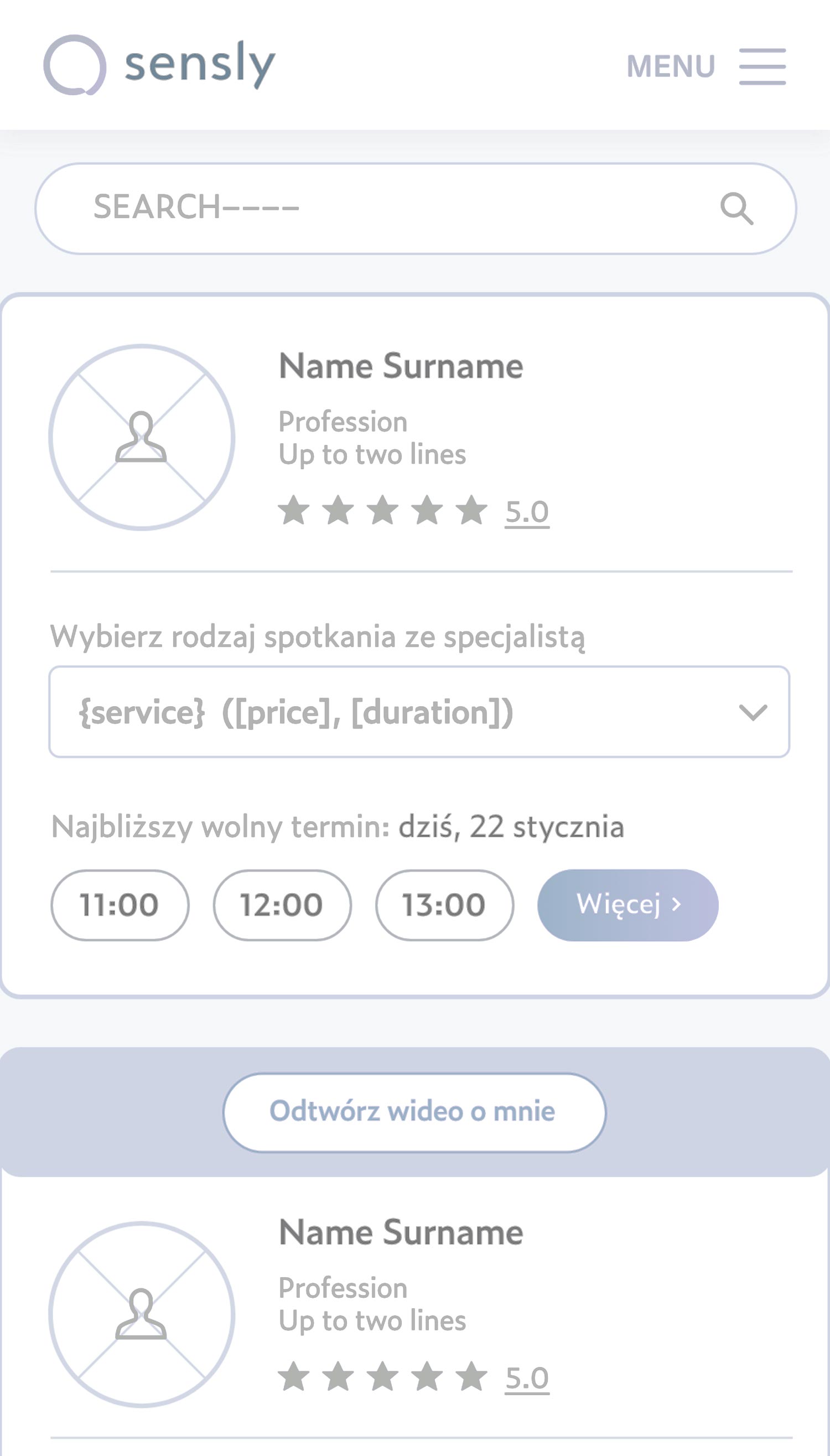
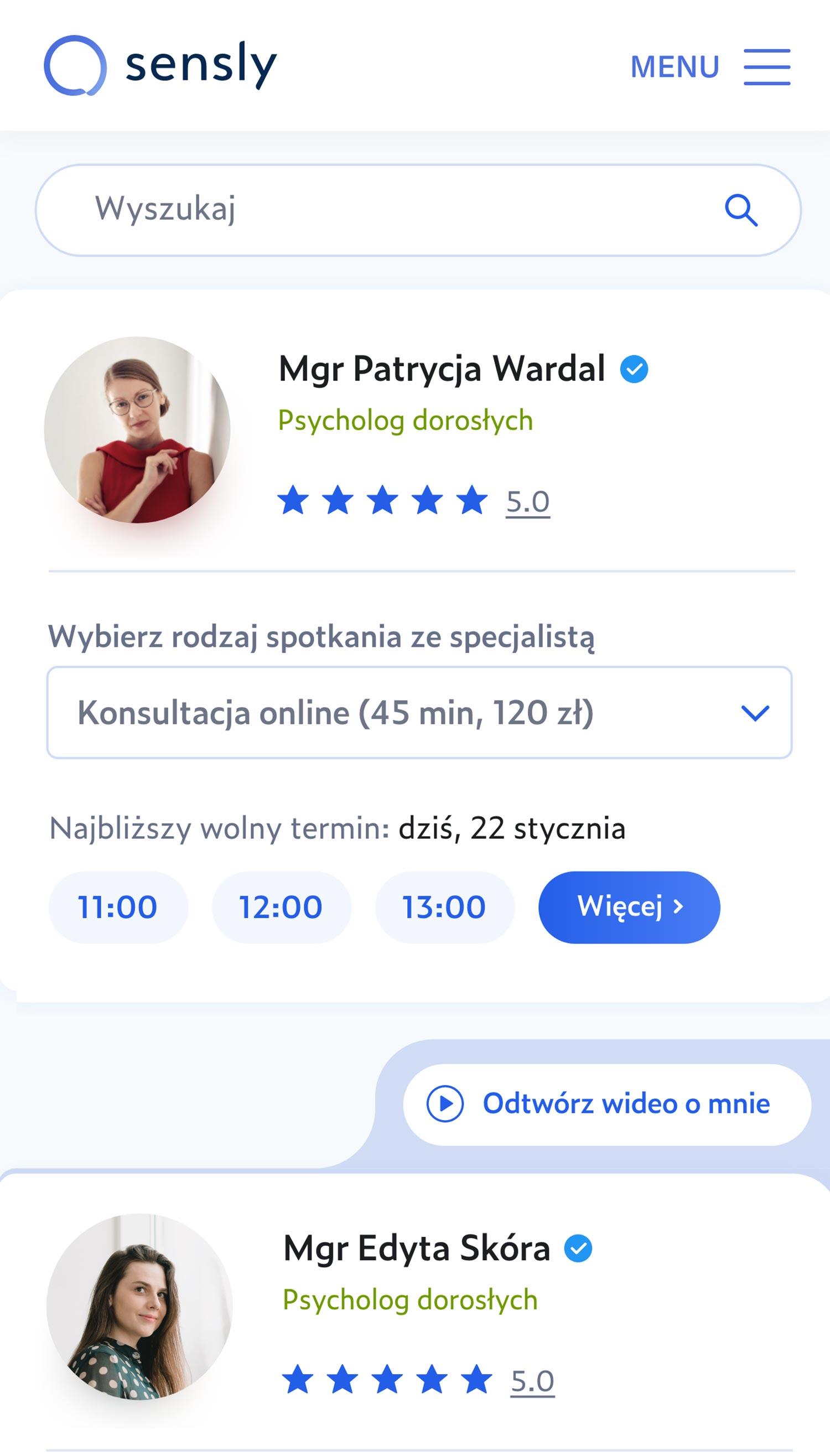
Listing - mobile view design process
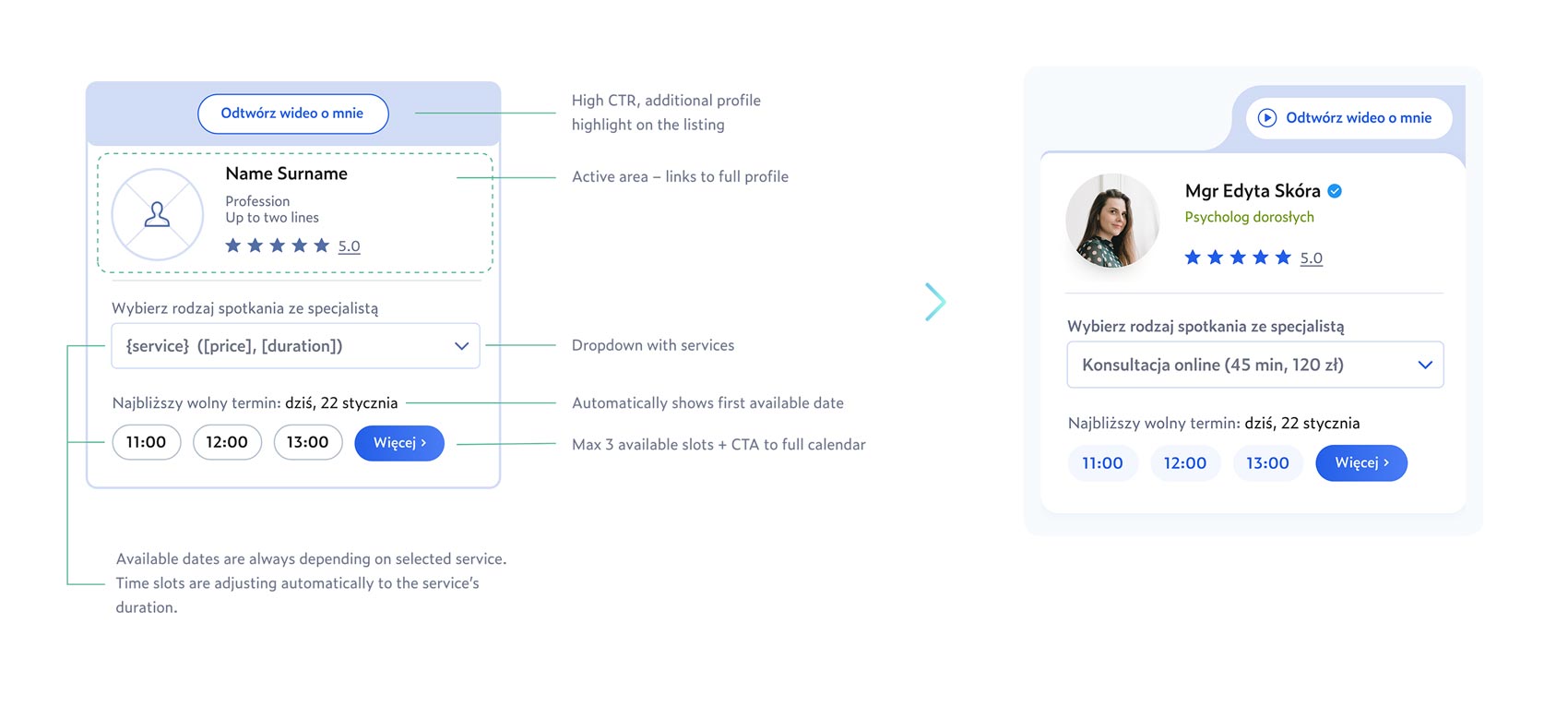
Listing – desktop view design process
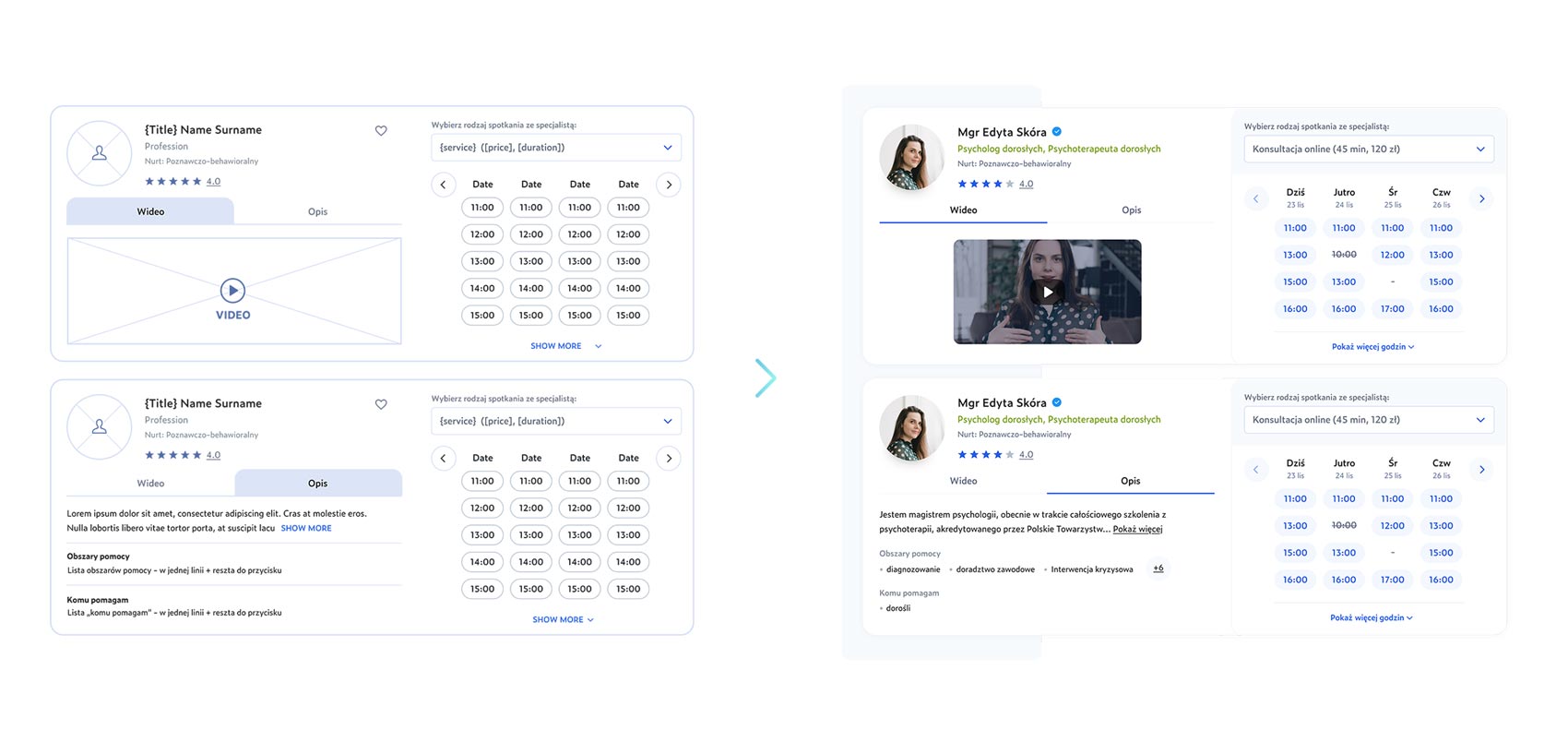
Atomic design & design system
Efficiency is the key
Design System
One of the previously mentioned goals was to create scalable design system in order to quickly build prototypes to verify various assumptions while maintaining high speed of the product development. Sensly’s design system covers everything – from atoms to complex components and templates. Thanks to this, we ensured brand consistency, the effectiveness of creating new solutions and the ease of developing the existing ones. During the course of the project the platform has been significantly redesigned twice. Due to the well-thought-out way of its design, the process ran smoothly every time.
